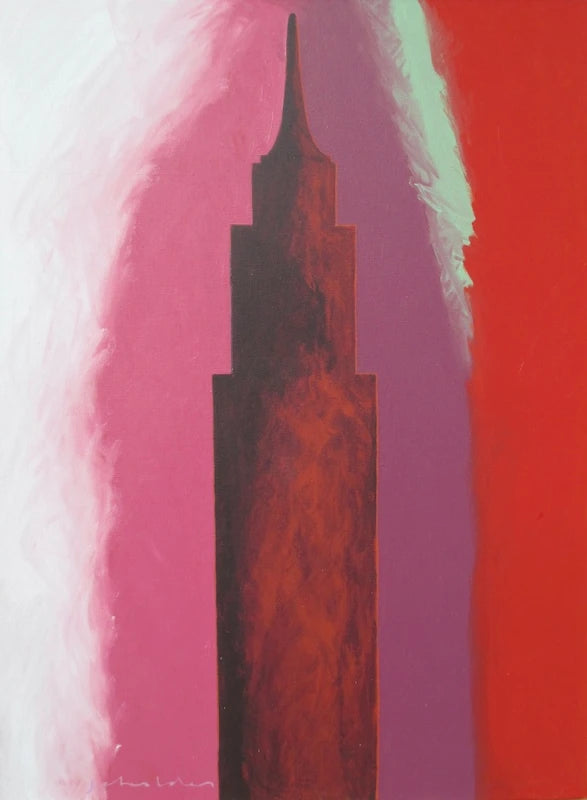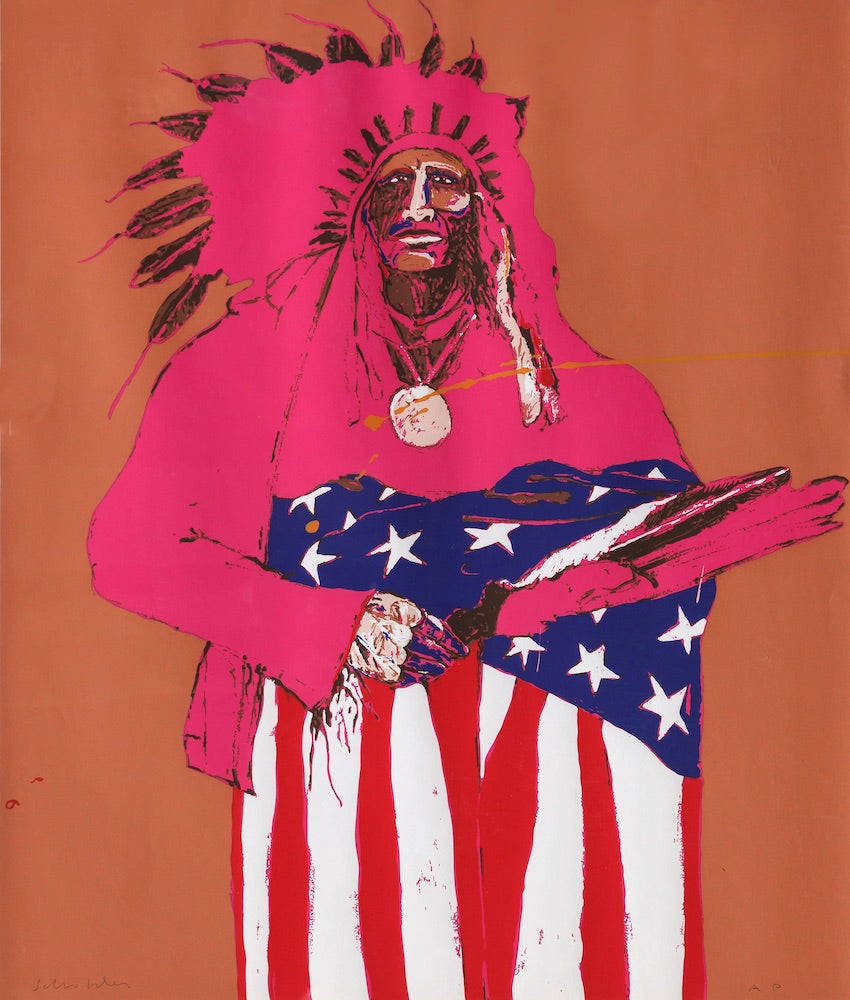Fritz Scholder was born in 1937 in Breckenridge, Minnesota. He was the fifth consecutive male of his family to bear this name. His paternal grandmother was a member of the Luiseño tribe of Mission Indians. Scholder studied at the University of Kansas, Wisconsin State University, and with Wayne Thiebaud at Sacramento College in California. He earned a Master of Fine Arts Degree from the University of Arizona in 1964.
Although Scholder did not consider himself an Indian, he was regarded as a leader of the New American Indian Art Movement. From 1964 to 1969 he taught painting and art history at the Institute of American Indian Arts in Santa Fe, New Mexico. From the beginning, he struggled to represent the landscape and people of the Southwest without indulging in the romantic clichés of genre art on the Native themes. In time he created an extraordinary fusion of abstract expressionism, surrealism and Pop art to express his unique vision of the Southwestern scene and the Native experience.
In his work, he frequently showed the harsh, realistic side of Indians' lives and deaths, including the affects of alcohol, but some of his depictions are humorous such as Indians on horseback carrying umbrellas. His brushwork is generally swift, and the tone often somber and surreal. A major influence on his work was the contemporary British artist, Francis Bacon, from whom Scholder adapted ironic distortions into his canvases.
Although best known for his paintings, Mr. Scholder produced work in a variety of media - lithographs, photographs, sculpture and books. His work is in dozens of museum collections, including those of the Museum of Modern Art, the Los Angeles County Museum of Art, the Bibliothèque Nationale de France, the Hirschhorn Museum and Sculpture Garden, and the Smithsonian American Art Museum.
In a 2001 interview in The Times, Mr. Scholder, said he was a "natural optimist, which might be surprising, because I like the dark side of things." He regularly fashioned self-portraits in different guises, including a buffalo and a sphinx. His last, rendered in 2003, shows him seated with an oxygen tube in his nose as a pool of blood accumulates on the floor alongside a book and a photograph. In the foreground, an Egyptian cat gazes up at him.
Fritz Scholder died February 10, 2005 at age 67 in Scottsdale, and a memorial service was held at the Heard Museum in Phoenix. He was married to Lisa Markgraf Fisher and had one son.


 Vendor:Altamira Fine Art
Vendor:Altamira Fine Art

